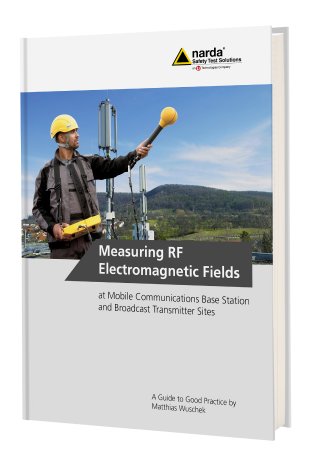As well as the subject matter, the author knows the SRM-3006 reference device like the back of his hand, having used this measuring instrument himself for many years in scientific research for his own studies as well as for industrial and public authority projects. This adds unique weight to the recommendations made in this handbook. This practical guide provides the main theoretical and practical background information that is needed in order to determine the high frequency immissions of various field sources using special measuring equipment to comply with the applicable standards. A large number of parameters and their interdependencies have to be taken into account for correct evaluation of the measurement results, particularly when making measurements in the vicinity of broadcast transmitters and cellular base stations. For this particular aspect, where things are extremely complicated, SRM users can profit from the depth of knowledge gained through some 20 years of experience by the internationally acclaimed expert in this field. Similar to the practical sessions that are part of the user training and the seminars regularly conducted by Prof. Wuschek in partnership with Narda STS, the author has collected together all the specific device settings for various measurement situations in tables in this handbook. The test engineer can in many cases use these parameter settings unchanged in each of the measurement situations discussed, which saves valuable time that could otherwise be wasted by troubleshooting or by trial and error testing. The knowhow contained in this book can result in a huge improvement in efficiency.
However, this book also provides significant added value to experts in the field strength measurement sector even if they do not already possess an SRM-3006. They too can profit from the concentrated knowledge base that runs through every one of the clearly structured chapters, which build on each other consecutively. That is because the basic theory and physical relationships involved in correctly determining the immission are absolutely independent of the instruments used. Even those users who are not acknowledged experts in spectrum analysis can gain much from this handbook with regard to getting to know more about this special type of testing. The many reproducible practical examples, along with the descriptive graphics, tables and meaningful diagrams make it easy for beginners with application-oriented thinking to become familiar with this subject.
The first chapter in this book starts with important basic information, including a discussion of the international limit value specifications for the high frequency range. Prof. Wuschek also explains the fundamental measurement principles in this chapter, and gives the first practical tips on how to perform the measurements themselves, and also answers questions concerned with quality assurance. To determine the immission at the measurement location correctly, the measuring device used must be set up for each separate field source. With this in mind, chapter 2 focuses on the SRM-3006. Beginning with a comprehensive introduction to the measuring device by means of a presentation of its basic functions and a detailed description of the various measurement modes and parameter settings, this chapter goes on to describe the effects of the various settings on the results of a measurement. After introducing the major broadcast and cellular communications systems, the third chapter outlines the main system parameters that are relevant to correct determination of the field strength. This is followed by a detailed explanation of how the SRM-3006 can be set up optimally for each of the different RF systems named in the chapter, including evaluation of the measurement results and their comparison with the limit values.
A copy of the first edition of the SRM-3006 handbook “Measuring RF Electromagnetic Fields” (ISBN 978-3-00-061912-0) by Prof. Dr.-Ing. Matthias Wuschek is included with every new SRM-3006 ordered from now on. Interested parties can also purchase this excellent practical guide through one of Narda’s international sales partners at a cost of 69 Euros. This book is definitely required reading for professionals in the RF field. The handbook is designed for everyone who has a basic understanding of high frequency and radio technology, as it contains much generally applicable information that can result in increased professional expertise and efficiency in everyday work.

